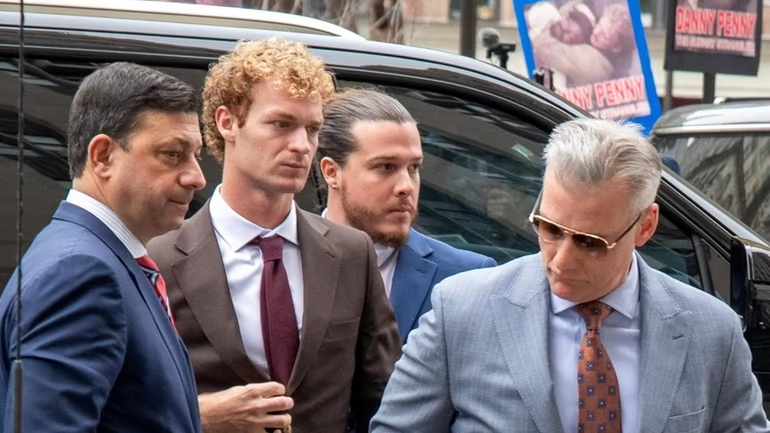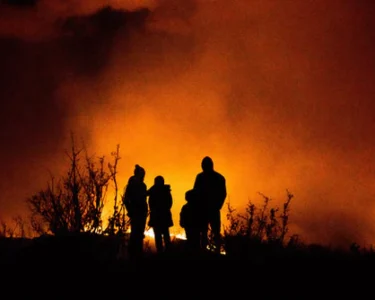Daniel Penny Trial Sparks Nationwide Cultural Reckoning
The Daniel Penny trial has become a lightning rod for debates about justice, accountability, and America’s complicated social divides. From headlines to dinner-table talks, this case has ignited a nationwide cultural reckoning that continues to dominate the public conversation.
As the nation follows the trial’s twists and turns, feelings of anger, fear, and hope dominate public opinion, revealing deep rifts in how Americans view issues of race, privilege, and law enforcement. But what does this case really mean for the country? Let’s dive into the core of this heated debate and its impact on modern American society.
What Led to the Cultural Reckoning Around the Daniel Penny Trial?
The origins of this cultural storm trace back to the day Daniel Penny’s actions became national news. Penny, a former Marine, was filmed restraining Jordan Neely, a 30-year-old unhoused Black man, in a New York City subway train. What might have been interpreted as an effort to ensure public safety quickly escalated when Neely tragically lost his life during the encounter.
The incident sparked public outrage and debates on social justice. Was Penny acting out of responsibility or racial bias? Was his use of force defensible, or an unjust overreach? While some see him as a protector, others view him as a perpetrator. The case has brought familiar national tensions roaring back to life.
These tensions highlight questions America has wrestled with for decades: What does justice look like in situations where power dynamics and privilege are at play? Public reactions have been as polarized as the court itself.

The Intersection of Race, Privilege, and Justice
One of the most prominent aspects of the Daniel Penny trial is its intersection with race and socioeconomic privilege. Penny, who is white, and Neely, who was Black and homeless, represent opposing ends of America’s societal spectrum. This stark contrast has reignited deep-seated debates about systemic inequality that range far beyond a single legal case.
Critics argue that Penny’s actions were influenced by racial bias and assumptions about Neely’s threat level. Others claim that Penny’s former military background drove him to act decisively in a situation he perceived as dangerous. What’s clear, however, is that these questions are resonating far beyond the courtroom.
Why the Daniel Penny Trial Is a Watershed Moment
The cultural weight of this trial extends beyond the legal arguments made by defense attorneys and prosecutors. It’s forcing Americans to confront crucial questions about their values and priorities in polarizing times. Here’s why this trial is so significant:
A Broader Conversation About Mental Health
Jordan Neely’s death has also cast a harsh spotlight on mental health care in the United States. Neely, who was known to suffer from mental illness, had previously been arrested nearly 40 times as he navigated life as a homeless man in one of America’s largest cities. His tragic story reveals the cracks in public systems meant to protect the vulnerable.
The case has prompted many to ask tough questions about how society should respond to mental illness and the failure of institutions to provide meaningful help. The fact that the subway incident ended in death rather than an outreach opportunity highlights the urgency of this issue.
Did the lack of mental health resources seal Neely’s fate long before his encounter with Penny? And can this trial become the catalyst for better services for at-risk communities?
The Polarizing Role of Social Media
Social media has also amplified the cultural reckoning surrounding the Daniel Penny trial. While one group of users hails Penny as a heroic figure, others aggressively decry him as an emblem of systemic injustice. Viral videos, hashtags, and think pieces make opinions louder but do little to foster real dialogue.
This polarized atmosphere creates echo chambers that often hinder progress on complex social issues. It’s a reminder that empathy and understanding are often casualties of the debates these platforms incite.

Can America Reconcile Its Cultural Divisions?
At its core, the Daniel Penny trial represents a snapshot of America’s divided soul. Each new development fuels conversations that swing between calls for reform and demands for retribution. But where does this leave the nation’s quest for unity?
Some believe that the trial could be a turning point in America’s reckoning with race, privilege, and mental health. Others, however, fear it will deepen existing divides and lead to even greater dysfunction. Whether we learn from this event or become further entrenched in our differences remains to be seen.
What Comes Next?
The verdict in the Daniel Penny trial will undoubtedly echo far beyond the walls of the courtroom. Regardless of the outcome, it will be a defining moment in how Americans grapple with public safety, racial inequality, and moral responsibility.
In the meantime, individuals and institutions have an opportunity to look inward and reflect on their roles in shaping a more just and equitable society. Will we seize this moment to create meaningful change, or will we let it further entrench our divisions?

Taking Lessons From the Daniel Penny Trial
As we continue to navigate this era of cultural reckoning, the Daniel Penny trial serves as both a challenge and an opportunity. It reminds us of the work that still lies ahead to ensure justice, equity, and fairness for all members of society.
How we respond — as individuals, as a nation, and as a global community — will define the path forward. While the trial itself may end, the conversations it has ignited are only just beginning.
If you’re interested in reading more about similar pivotal moments shaping the cultural landscape, visit Zex News for the latest updates and in-depth analyses.
“`





